ARTWORKS
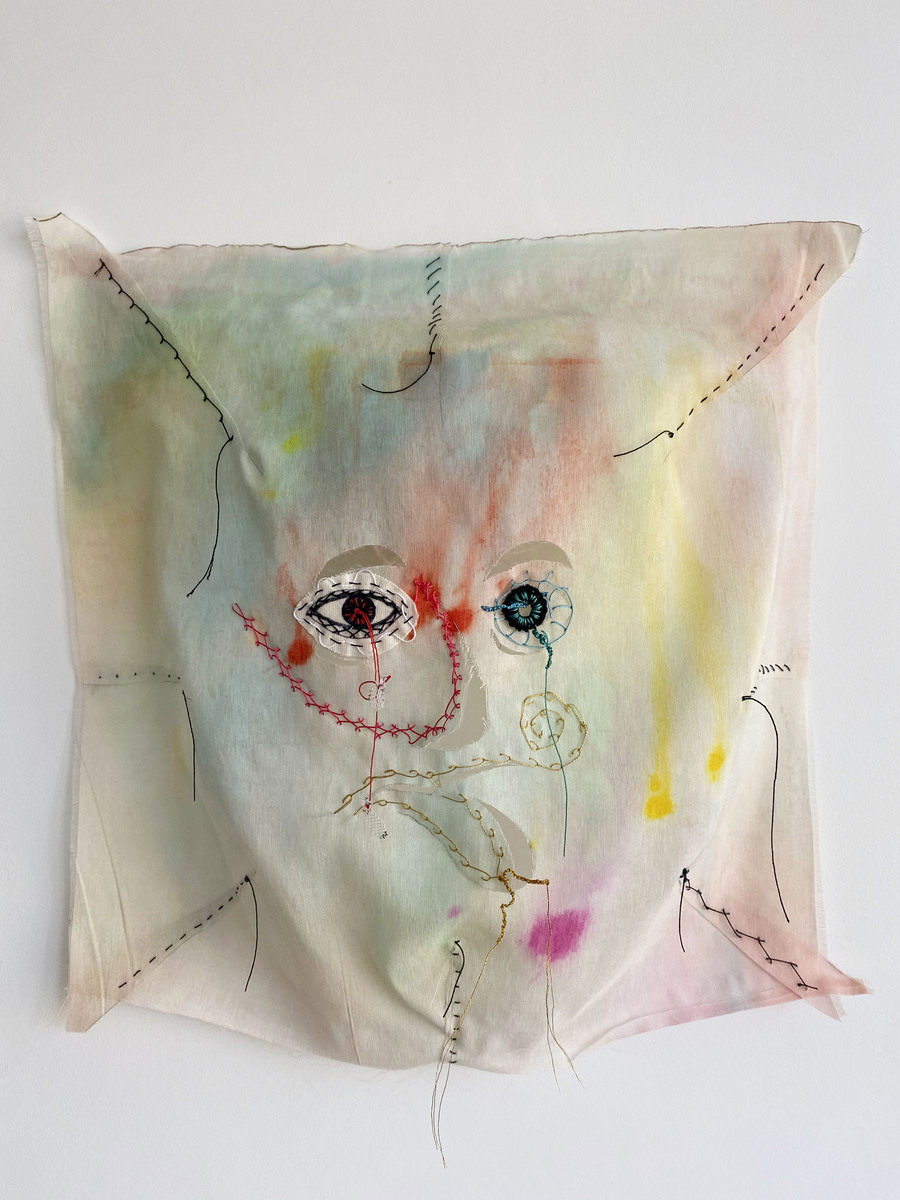
The Sinistry
Looking Through Feleksan Onar’s Glass
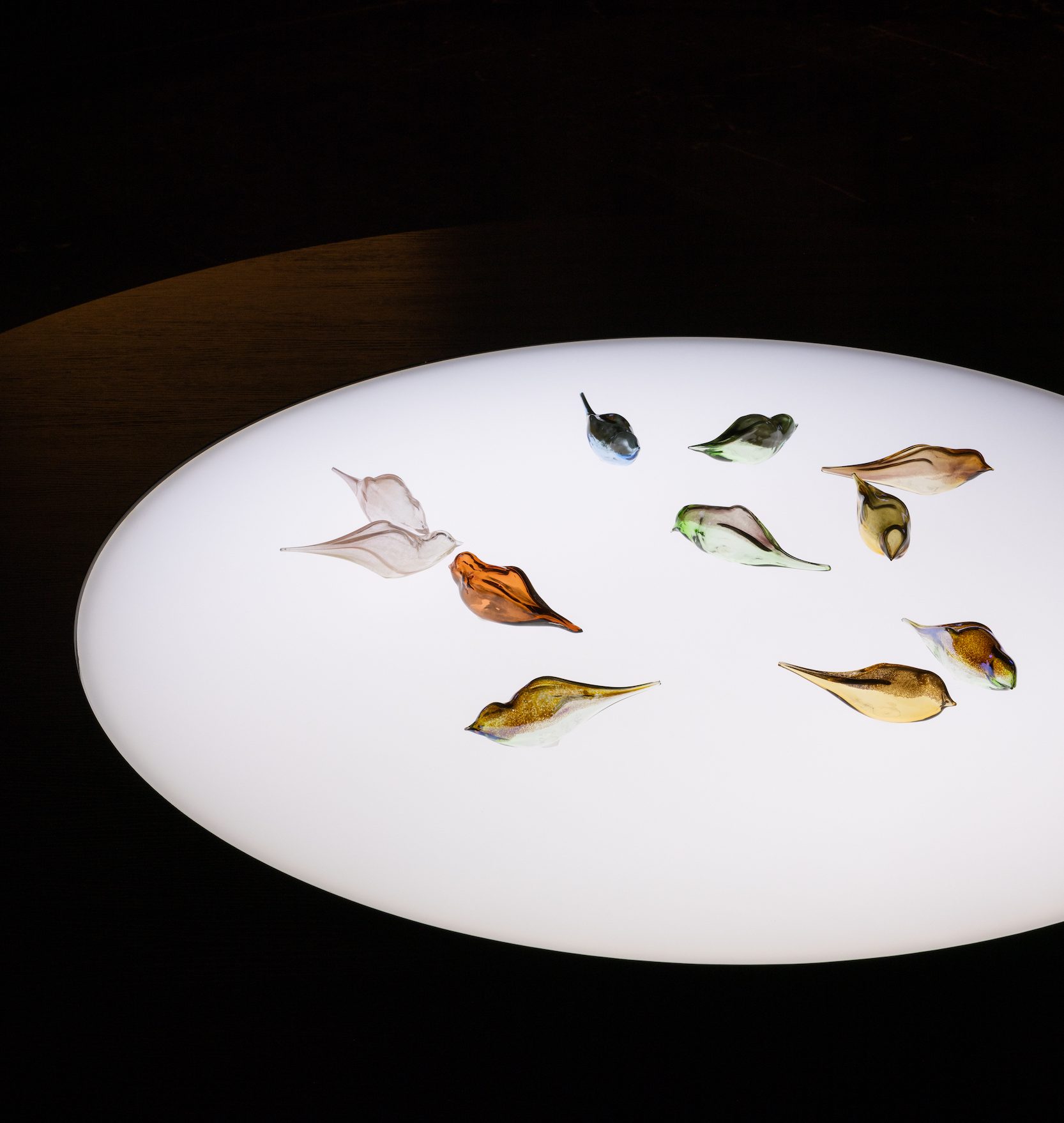
Felekşan Onar makes stories out of glass. Glassmaking can be traced back several thousand years, to Mesopotamia–the region at the heart of Iterarte’s programming. Glass has been a favoured medium throughout history, from stained glass windows in European Gothic churches and cathedrals, to Art Deco and Art Nouveau in the early-twentieth century in Europe and the United States, with glass-blowing techniques being developed in Murano, Venice from the 14th century onwards and still prevalent today in the manufacture of jewellery, craft objects and artworks. There is a powerful contradiction between the fragility of the material, and its longevity: it can take four thousand years for glass to decompose. It is therefore a fascinating material for an artist to choose, when their major preoccupations lie in notions such as historical narratives, the passage of time and shifting identities.
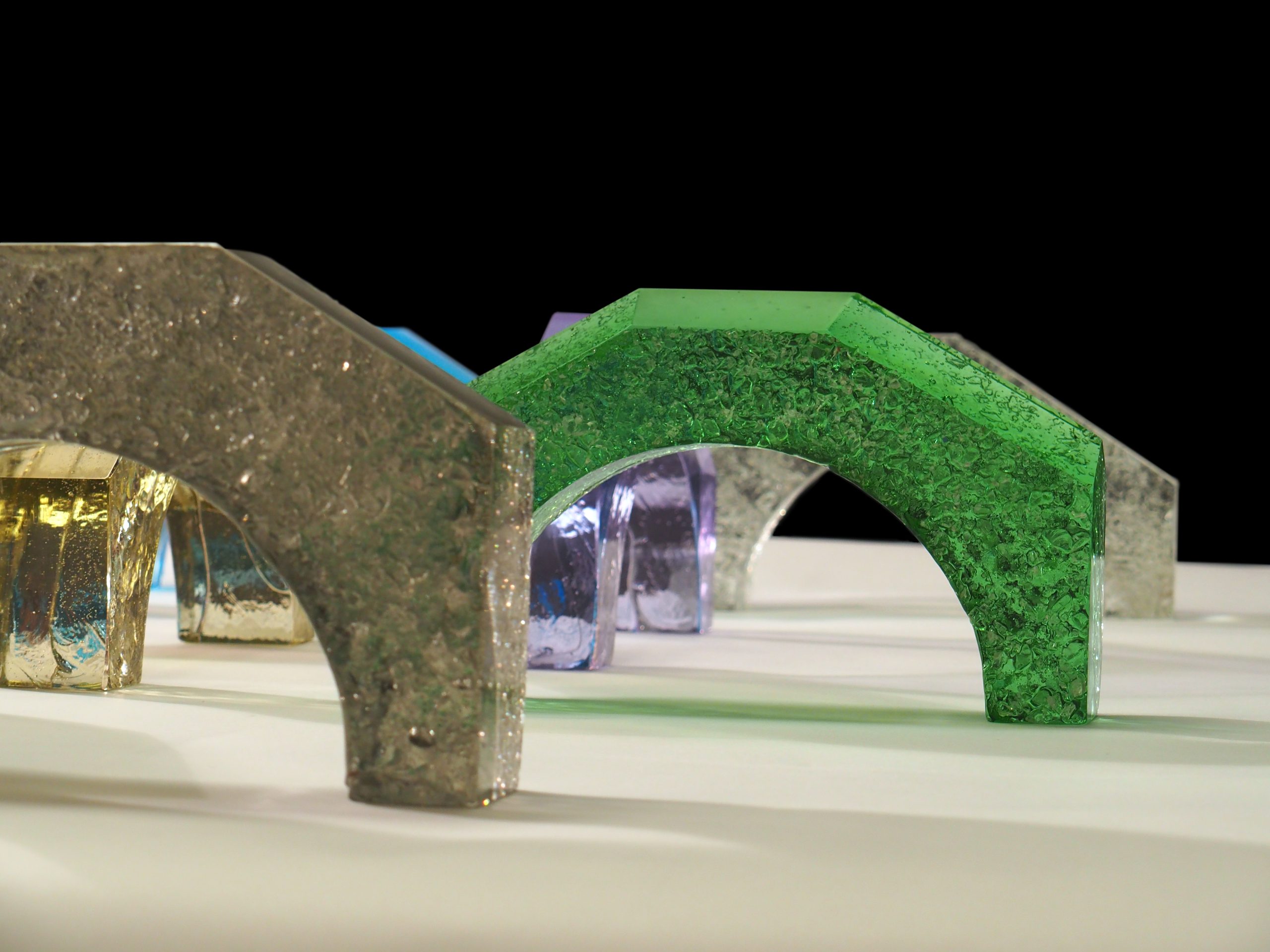
Onar trained at Glass Furnace, Istanbul after completing studies at Cornell and Harvard. Her work is in international collections in Australia, Finland, Germany, and the UK, and she has frequently exhibited in prominent museums. The travelling exhibition Perched was first conceived in 2017, and her latest works come together as large productions which she directs and produces, working with collaborators such as the writer and curator Arie Amaya-Akkermans. While she creates the individual components of her recent sculptural series using traditional glass making techniques such as blowing and casting, Onar introduces unique materials and processes in shaping her unique pieces. Each small element plays a role in a wider narrative – pieces such as Blue, Pink and Moss help to set the scene, positioning the story in a natural environment, suggesting a proximity to water, coral, or moss, as well as being standalone works of art. Characters emerge, sometimes situated in a specific time or place – Burdur or Ikiztepe for example, as depicted as totem forms, upright, multi-coloured creations fused with life-like features.
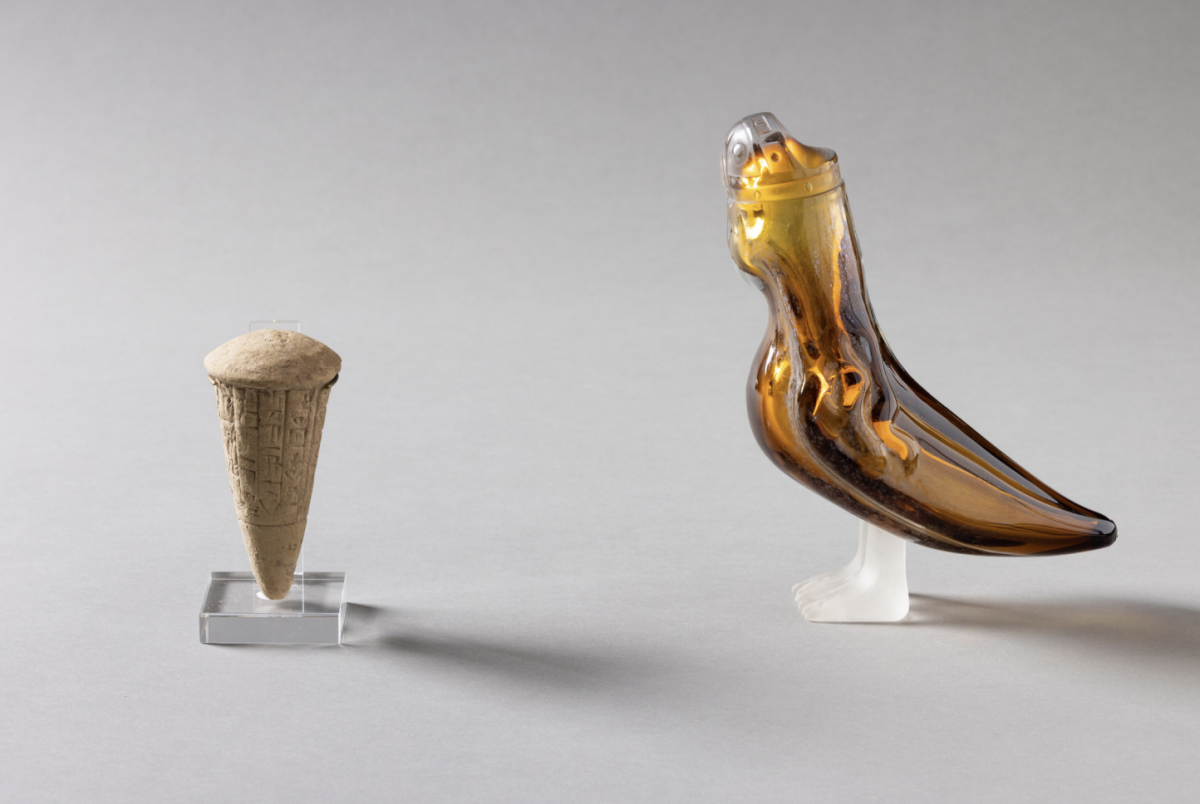
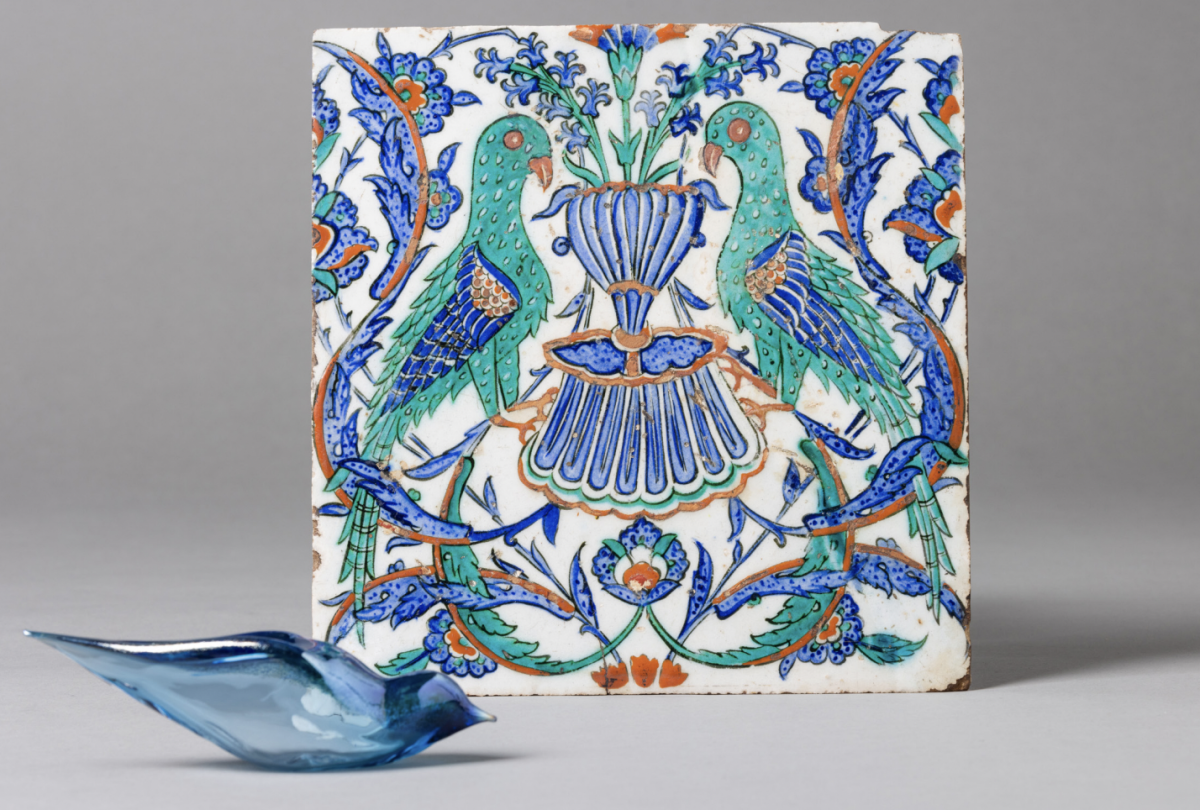
The protagonists of Onar’s stories, however, are always the birds. Stargazer, Messenger or the smallest Kanatsız Kuş – they are all individual characters, and yet collectively form a vocal chorus. After Utopia: The Birds came together as a solo exhibition at the Sadberk Hanım Museum in Istanbul in 2022-23, a culmination of research that Onar had been initially preoccupied with throughout the COVID pandemic, and with Amaya-Akkermans created a multi-layered response to our troubled world, its histories, futures, and innate goodness. The private museum holds over twenty thousand objects, ranging from the 6th millennium BC through the Byzantine period and Ottoman and Iznikware, from tiles and ceramics to textiles and calligraphy. After Utopia: The Birds was the first contemporary art intervention to take place there–the artist and curator selecting prize pieces from the archaeology collection to play a role in their narrative, such as an early Bronze Age marble figurine and inscribed nail, an Assyrian terracotta partridge shaped drinking vessel, and late Hellenistic bowls.

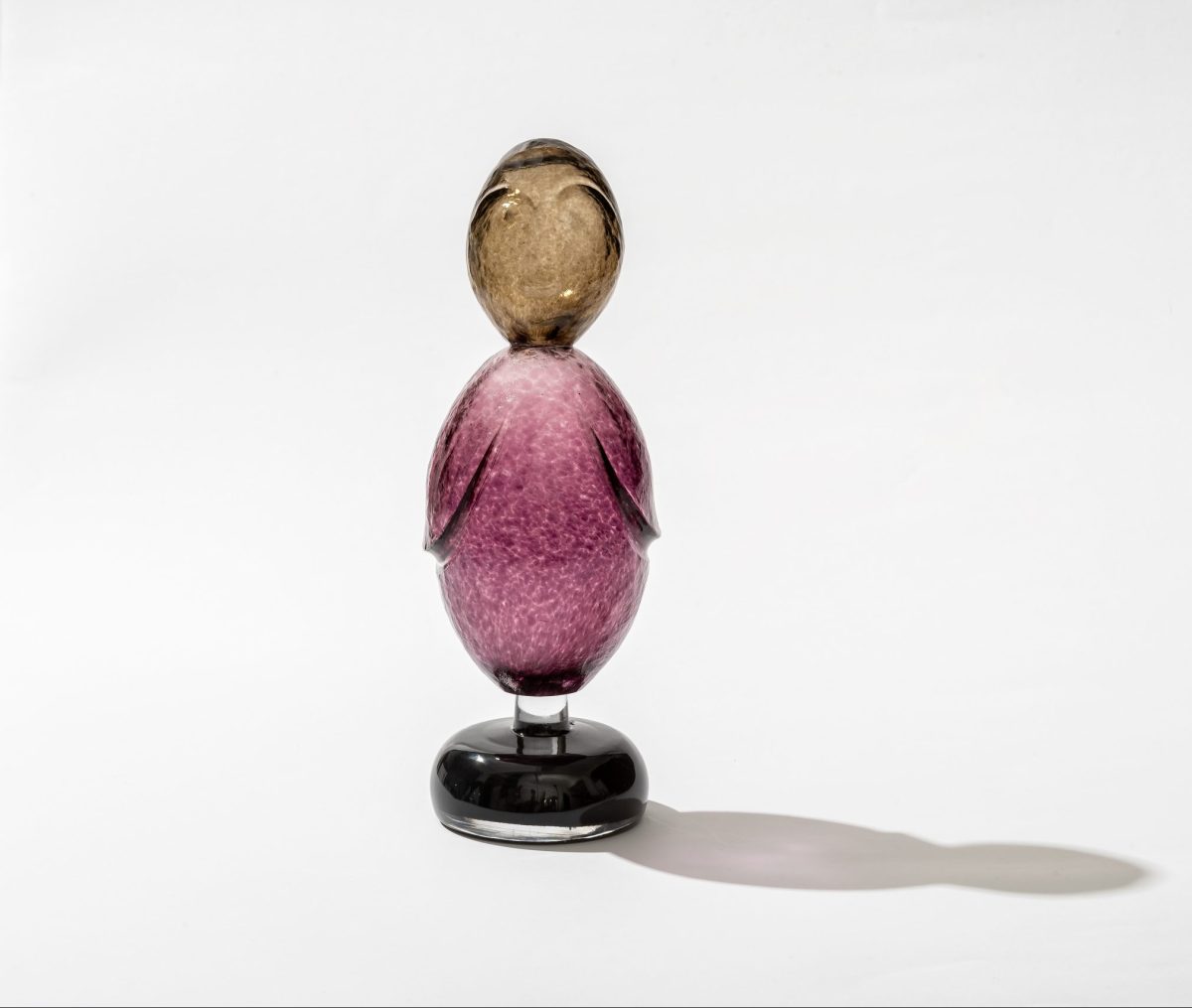
Several strands of storytelling emerge through the work. Taking their inspiration from Aristophanes’ The Birds and combining it with elements from Homer’s Odyssey, popular Karamanlidika Turkish ballads, Louis de Bernieres’ short story Birds without Wings, the collaboration resulted in a physical exhibition, short film, and monograph. After Utopia: The Birds engages with cultural histories as seen through artifacts, the meaning of deep past and the very concept of a utopia. The text of the film speaks of the fable of birds being older than the earth and therefore deserving of the right of kingship, owning the heaven and stars, with a destiny to build a city in the sky. As the story progresses this is seen to be a false utopia and at odds with human history: “how can an individual reach into the past?” and “the only possible utopia is a person itself”. Onar speaks with pride of her native country of Turkey, layered with history, at the cross-roads of the earth. The film ends with a message of hope: “I can hear a whisper, a promise. Finally, maybe, it will be born”.
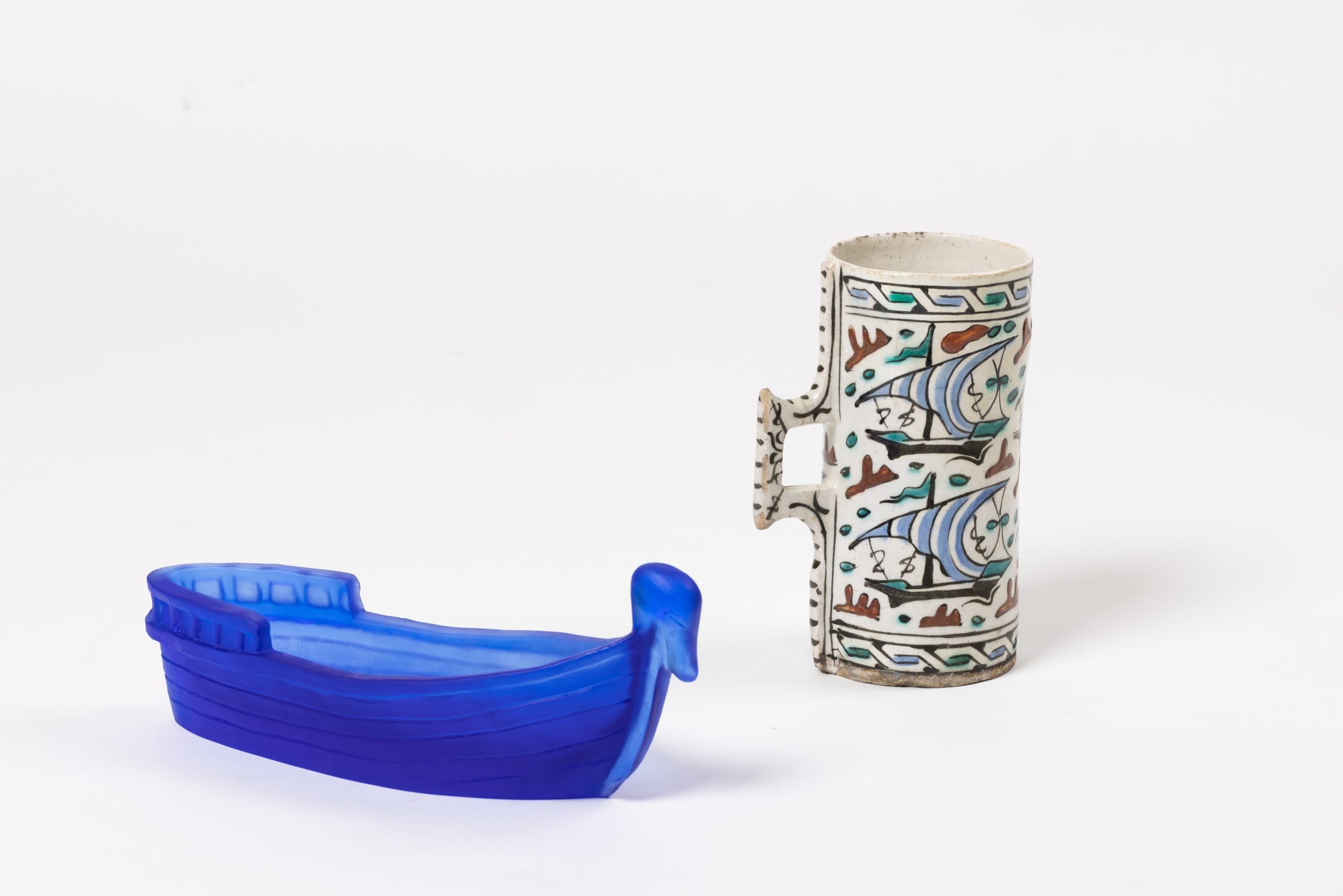
Felekşan Onar makes stories out of glass. Glassmaking can be traced back several thousand years, to Mesopotamia–the region at the heart of Iterarte’s programming. Glass has been a favoured medium throughout history, from stained glass windows in European Gothic churches and cathedrals, to Art Deco and Art Nouveau in the early-twentieth century in Europe and the United States, with glass-blowing techniques being developed in Murano, Venice from the 14th century onwards and still prevalent today in the manufacture of jewellery, craft objects and artworks. There is a powerful contradiction between the fragility of the material, and its longevity: it can take four thousand years for glass to decompose. It is therefore a fascinating material for an artist to choose, when their major preoccupations lie in notions such as historical narratives, the passage of time and shifting identities.